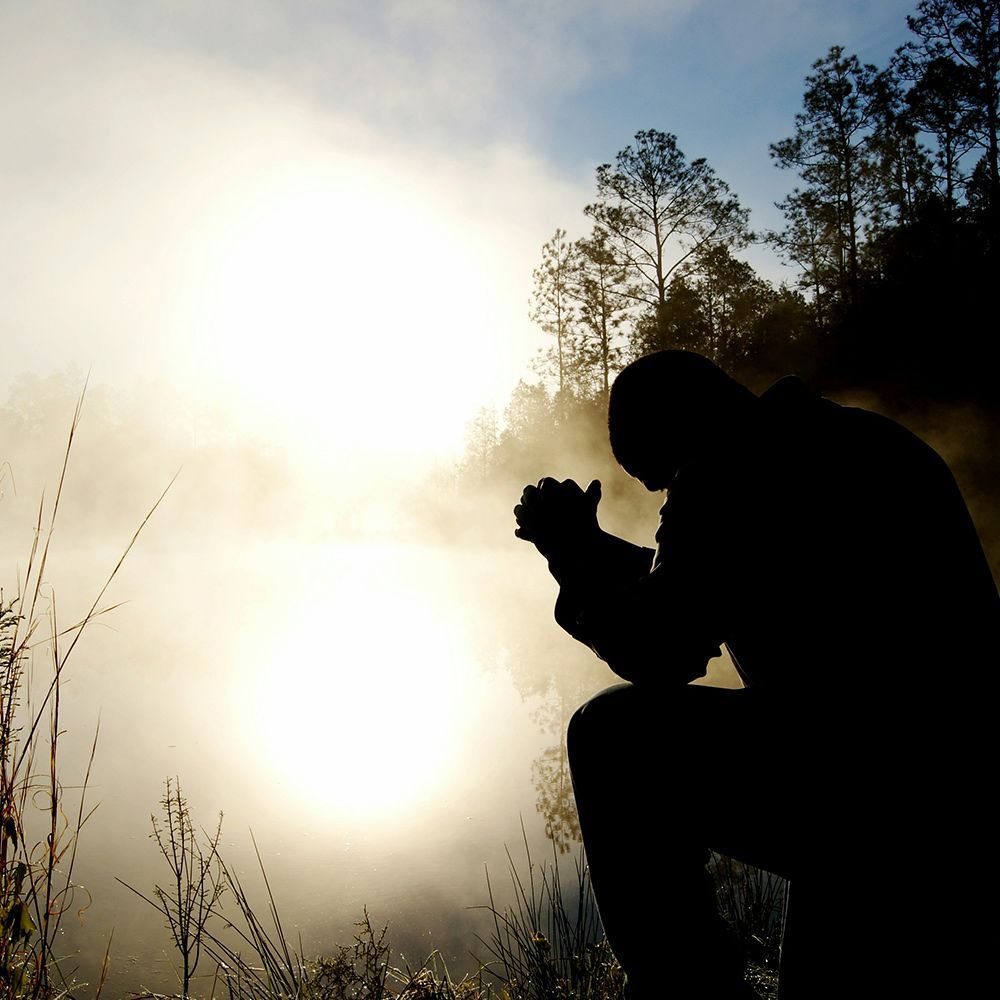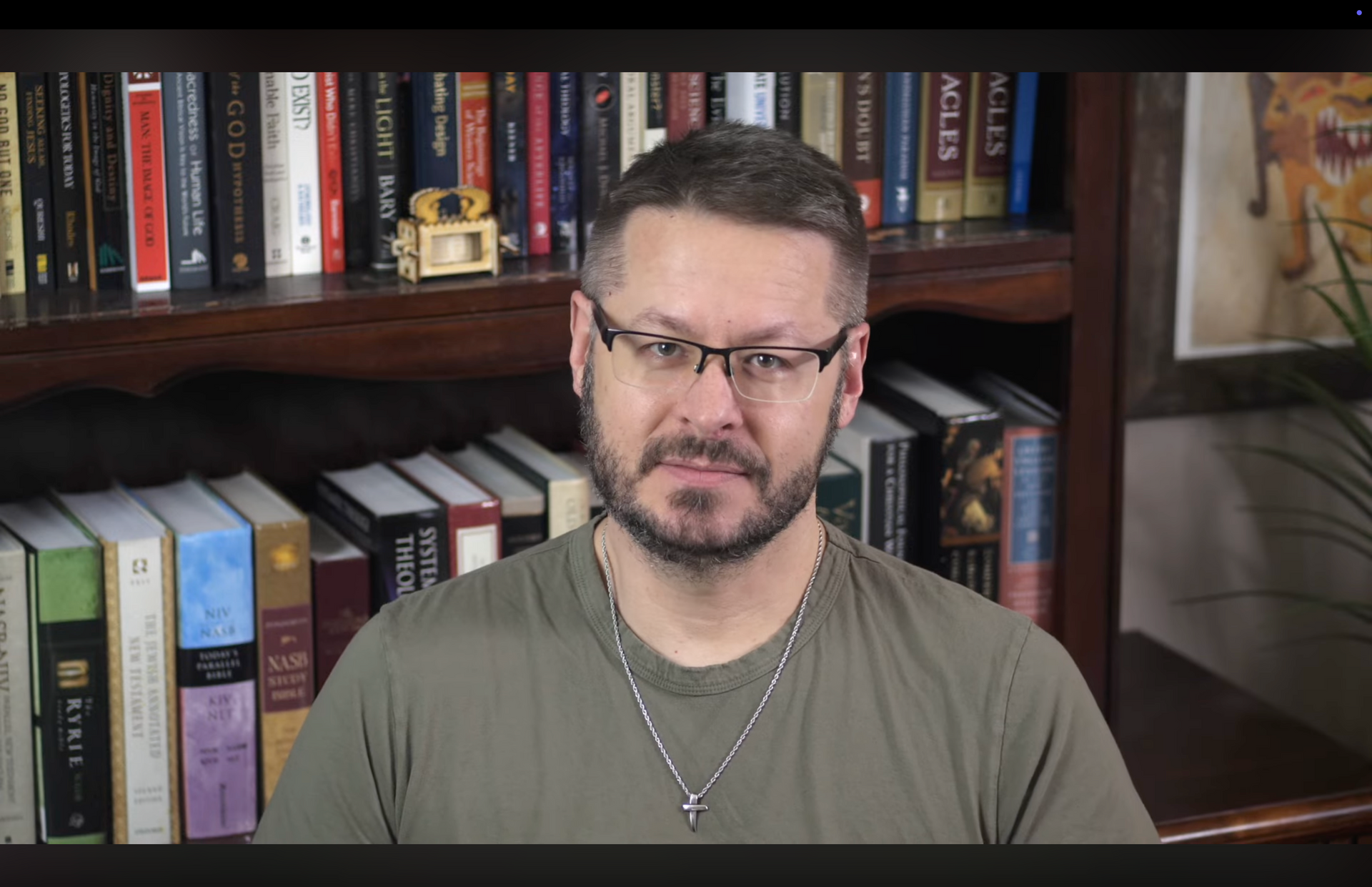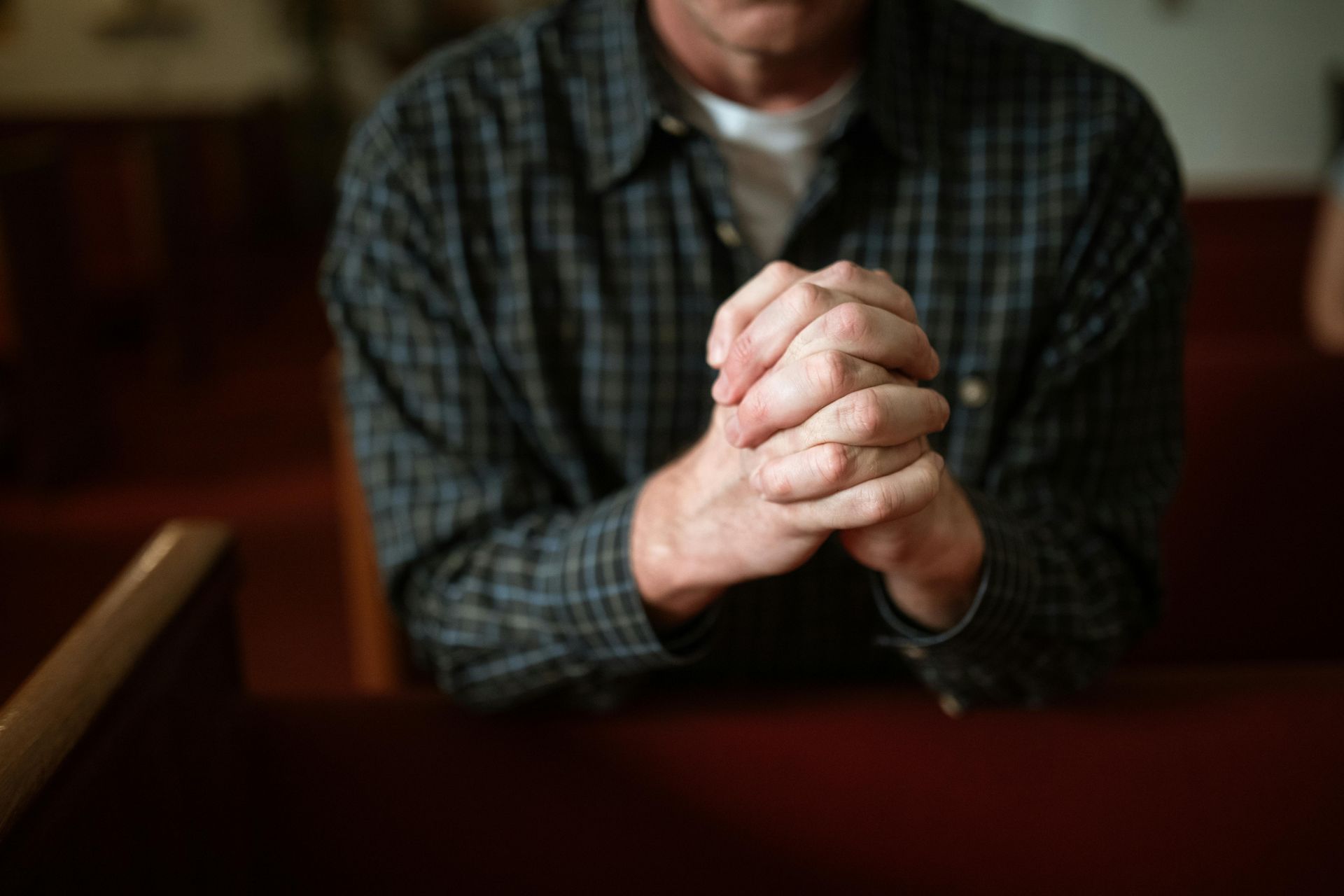Abraham's Journey - Polish
Scripture: Genesis 12
Every person's life can be plotted as being along some point of Abraham's journey from Mesopotamia to the Promised Land, a metaphor for our spiritual walk in this life.
Podróż Abrahama
Wstęp
Otwórzcie ze mną, proszę, Księgę Genesis, rozdział 12. W języku hebrajskim, Księgę Genesis nazywamy B’reszit – co oznacza: na początku.
Dzieje się to jakieś 2166 lat przed narodzinami Pana Jezusa.
„I rzekł Pan do Abrama … [w tym czasie jeszcze „Abram” – a nie „Abraham”] … Wyjdź z ziemi swojej i od rodziny swojej, i z domu ojca swego do ziemi, którą ci wskażę. A uczynię z ciebie naród wielki i będę ci błogosławił, i uczynię sławnym imię twoje, tak że staniesz się błogosławieństwem. I będę błogosławił błogosławiącym tobie, a przeklinających cię przeklinać będę; i będą w tobie błogosławione wszystkie plemiona ziemi. Abram wybrał się w drogę, jak mu rozkazał Pan, i poszedł z nim Lot. Abram miał siedemdziesiąt pięć lat, gdy wyszedł z Haranu. Wziął też Abram żonę swoją Saraj … [co w języku hebrajskim oznacza „moja księżniczka”] … i Lota, bratanka swego, i cały ich dobytek, którego się dorobili, i służbę, którą nabyli w Haranie. Wyruszyli, aby się udać do ziemi kanaanejskiej. I przybyli do Kanaanu. Abram przeszedł tę ziemię aż do miejscowości Sychem, do dębu More. Kanaanejczycy byli wówczas w tej ziemi. I ukazał się Pan Abramowi i rzekł: Ziemię tę dam potomstwu twemu. Wtedy zbudował tam ołtarz Panu, który mu się ukazał. Stamtąd wyruszył w góry na wschód od Betelu i rozbił swój namiot. Betel było z zachodu, a Aj ze wschodu. Tam zbudował Panu ołtarz i wzywał imienia Pana. Potem wędrował Abram coraz dalej do Negebu. Kiedy zaś nastał głód w tym kraju, Abram udał się do Egiptu, aby się tam zatrzymać jako przybysz, gdyż w kraju był wielki głód. A gdy się już zbliżał do Egiptu, rzekł do swej żony Saraj: Wiem, że jesteś piękną kobietą. Gdy więc zobaczą cię Egipcjanie, powiedzą: To jest jego żona, i zabiją mnie, a ciebie zostawią przy życiu. Mów więc, że jesteś moją siostrą … [i w rzeczywistości ona była jego przyrodnią siostrą]
… aby mi się dobrze wiodło ze względu na ciebie i abym dzięki tobie pozostał przy życiu. Gdy Abram przybył do Egiptu, zobaczyli Egipcjanie, że ta kobieta była bardzo piękna. A gdy ujrzeli ją dworzanie faraona, wychwalali ją wobec faraona, i zabrano tę kobietę do pałacu faraona. Ze względu na nią wyświadczał Abramowi dobrodziejstwa, tak że miał owce, bydło, osły, niewolników i niewolnice, oślice i wielbłądy. Lecz Pan dotknął faraona i jego dom ciężkimi plagami z powodu Saraj, żony Abrama. Wezwał więc faraon Abrama i rzekł: Cóżeś mi to uczynił? Dlaczego nie oznajmiłeś mi, że ona jest żoną twoją? Dlaczego powiedziałeś: Ona jest siostrą moją, tak że wziąłem ją sobie za żonę? A teraz, tu jest żona twoja, weź ją i odejdź. Potem rozkazał faraon ludziom swoim, aby odprowadzili go wraz z żoną jego i wszystkim, co do niego należało. Wyruszył tedy Abram z Egiptu z żoną swoją i wszystkim, co do niego należało, do Negebu, a Lot był z nim. A Abram był już bardzo zasobny w trzody, srebro i złoto. I wędrował, zatrzymując się na postojach, z Negebu aż do Betelu, do miejsca, gdzie poprzednio był jego namiot, między Betelem i Aj, do miejsca, gdzie przedtem zbudował ołtarz. Tam wzywał Abram imienia Pana. Również Lot, który wędrował z Abramem, miał owce, bydło i namioty. Lecz kraj nie mógł ich obu utrzymać, bo dobytek ich był tak wielki, że nie mogli przebywać razem. Między pasterzami stad Abrama a pasterzami stad Lota powstał spór. A Kanaanejczycy i Peryzyci mieszkali wówczas w kraju. Wtedy rzekł Abram do Lota: Niechże nie będzie sporu między mną a tobą i między pasterzami moimi a twoimi, jesteśmy przecież braćmi. Czyż cały kraj nie stoi przed tobą otworem? Odłącz się więc ode mnie! Jeśli chcesz pójść w lewo, ja pójdę w prawo, a jeśli chcesz pójść w prawo, ja pójdę w lewo. Wtedy Lot podniósłszy oczy, widział, że cały okręg nadjordański – zanim Pan zniszczył Sodomę i Gomorę – był obfity w wodę, jak ogród Pana, jak ziemia egipska, aż do Soaru. I wybrał sobie Lot cały okręg nadjordański. I wyruszył Lot na wschód. Tak rozstali się obaj ci mężowie” – Genesis 12:1-13:11
Zaczęło się to jeszcze przed Haranem
Były pewne informacje znane starożytnym Żydom, które nie zostały zapisane w Starym Testamencie, ale za to później odnotowano je w Nowym Testamencie. Szczepan, przed swoją męczeńską śmiercią – w swojej apologii – (Dzieje Apostolskie 7:2-4) mówi nam coś na temat podróży Abrahama, czego nie ma w Genesis:
„… Bóg chwały ukazał się ojcu naszemu Abrahamowi, gdy był w Mezopotamii, zanim zamieszkał w Haranie, i rzekł do niego: Opuść ziemię swoją i rodzinę swoją, i idź do ziemi, którą ci wskażę. Wtedy wyszedł z ziemi chaldejskiej i zamieszkał w Haranie. A stamtąd, gdy umarł jego ojciec, przesiedlił go do tej ziemi, w której wy teraz mieszkacie”.
W tym oto fragmencie, Dzieje Apostolskie mówią nam, że Bóg powołał Abrahama w Mezopotamii – w Ur chaldejskim. Księga Genesis znacznie później podejmuje historię w Haranie.
Abraham jest ojcem wszystkich tych, którzy wierzą – Żydów, Arabów – bo nawet muzułmanie odwołują się do Abrahama. Arabowie nazywają go Ibrahim, Żydzi nazywają go Abba Abraham – Ojciec Abraham. „Ojciec wszystkich wierzących” teologicznie oznacza, że jest on pierwowzorem. Jego osobiste doświadczenia są zapowiedzią tego, co przydarzy się jego potomstwu, jego potomkom.
Typologia Egiptu
Musimy zrozumieć pojęcie „wychodzenia z Egiptu”. W trakcie klęski głodu Abraham udaje się do Egiptu i tam się osiedla. Później, Bóg dokonuje sądu na faraonie i Abraham wychodzi z Egiptu, a następnie udaje się do Izraela. Jeszcze później – podczas klęski głodu – jego potomkowie, synowie Jakuba, idą do Egiptu. Ponownie Boży sąd spada na faraona – niegodziwego faraona – i potomkowie Abrahama czynią dokładnie to, co zrobił sam Abraham: wychodzą z Egiptu, zabierając ze sobą skarby Egiptu do Izraela. Zatem to, co przydarzyło się Abrahamowi, przydarza się i jego biologicznym potomkom, Żydom. Ale potem, apostoł Paweł mówi nam w 1 Liście do Koryntian, że to również nam się przytrafia. Egipt jest symbolem świata, ziemia obiecana jest symbolem nieba. I tak, jak Mojżesz zawarł przymierze krwi i pokropił nią swój lud, przeprowadzając ich przez Morze Czerwone do ziemi obiecanej, tak Jezus prowadzi nas ze świata poprzez chrzest do nieba (1 List św. Pawła do Koryntian, rozdział 10). MY wyszliśmy z „Egiptu”. Faraon oczywiście jest symbolem diabła, boga tego świata, ale jest on również ważnym symbolem Antychrysta, który ma nadejść. Zatem Abraham wychodzi z Egiptu, jego potomkowie – Żydzi – wychodzą z Egiptu, a ponieważ jest on ojcem wszystkich wierzących – MY wychodzimy z Egiptu przez zbawienie, dokonane przez Jezusa Chrystusa.
Obecnie, wiele osób – zwłaszcza liberalnych teologów – miałoby problem z fragmentem z Ewangelii św. Mateusza 2:15, gdzie po śmierci króla Heroda, Mateusz cytuje proroka z Księgi Ozeasza 11:1, gdzie jest napisane:
„Z Egiptu wezwałem mojego Syna” – (tłumaczenie z Przekładu Dosłownego Nowego Testamentu EIB)
Ozeasz odnosił się do exodusu Żydów. Dlaczego zatem Mateusz bierze tenże fragment, który w swoim kontekście odnosi się do Żydów i mówi w ten sposób o Jezusie?
Czyni to, ponieważ hebrajskie zrozumienie proroctw stanowi pewien „wzorzec”. Abraham wychodzi z Egiptu, Żydzi wychodzą z Egiptu, my wychodzimy z Egiptu i Jezus, który jest z nasienia Abrahama, musi wobec tego również wyjść z Egiptu. On pasuje do wzorca: Bóg ponownie osądza niegodziwego króla – Heroda – a Jezus, jako typ Abrahama oraz jako potomek Abrahama, wychodzi z Egiptu.
Hebrajskie proroctwo stanowi wzorzec. Ostatecznie, wyjście z Egiptu oznacza pochwycenie i zmartwychwstanie Ciała Chrystusa. Te sądy nad Egiptem z Księgi Exodus, są odtworzone w Księdze Objawienia św. Jana: ciemności, krew, itp. A sposób w jaki magowie faraona podrabiali cuda Mojżesza oraz Aarona jest sposobem, w jaki Antychryst i fałszywy prorok będą podrabiać cuda Jezusa oraz Jego świadków.
Przenieśli ze sobą kości Józefa z Egiptu do ziemi obiecanej, ponieważ umarli w Chrystusie, powstają jako pierwsi; wychodzimy razem. Jest to obraz zmartwychwstania. Jest to OSTATECZNE wyjście z Egiptu. Hebrajskie proroctwo stanowi zawsze wzorzec przepowiadający wielokrotne wypełnienie. Ale każde wypełnienie się jest „typem” czy zapowiedzią końcowego wypełnienia się. Tak jest z Abrahamem. Jego doświadczenia są powielane przez Żydów oraz wierzących w Mesjasza: wychodzimy z Egiptu.
Obietnice dane Abrahamowi
Bóg złożył Abrahamowi pięć obietnic:
- że On uczyni imię Abrahama wielkim (i to zapewne się stało),
- że Abraham posiądzie na własność ziemię (i to się stało),
- że stanie się wielkim narodem (i to się stało),
- że Bóg będzie błogosławił tych, którzy błogosławią Abrahama (ta obietnica jest następnie przenoszona na Jakuba i potomków Abrahama przez patriarchów),
- że Bóg będzie przeklinał tych, którzy przeklinają Abrahama i jego potomków (i to ZAWSZE miało miejsce).
Boży sąd dawno temu spadłby już na Stany Zjednoczone Ameryki, gdyby nie dwa szczególne powody: każde trzy dolary z pięciu – wydawanych na misje, ewangelizacje i cele charytatywne – pochodzą ze Stanów Zjednoczonych; drugim powodem jest to, że Ameryka traktuje Żydów lepiej, niż wszystkie inne narody.
Z Holandią byłoby tak samo. Niemoralność w Holandii jest niewiarygodna, ale tam chroniono Żydów w trakcie Holokaustu. Jestem przekonany, że jest to jedyna rzecz, która powstrzymuje Bożą rękę przed sądem nad Holandią. Jeśli kiedykolwiek odwiedzilibyście Amsterdam, to nie uwierzylibyście co się tam dzieje.
Bóg będzie błogosławił tych, którzy błogosławią Żydów i będzie przeklinał tych, którzy przeklinają Żydów. Gdy naziści przejęli władzę w Niemczech, to zbudowali mury wokół żydowskich sztetli, getta. A każdego Żyda wspinającego się na mur, zestrzeliwano z broni maszynowej. Co później się wydarzyło? Po upadku III Rzeszy, został zbudowany mur wokół Berlina Wschodniego, wielkiej stolicy Rzeszy, a każdy Niemiec wspinający się na ten mur, był zestrzeliwany z broni maszynowej.
Moi dziadkowie pochodzili z Wielkiej Brytanii. Brytania rządziła falami1. Gdybyście powiedzieli moim dziadkom, że nadejdzie czas, gdy słońce będzie zachodzić co 24 godziny nad Imperium Brytyjskim2, to oni wyśmialiby was. Ale Brytania odwołała Deklarację Balfoura3 po tym, jak wcześniej obiecała Żydom prawo do powrotu do ich ziemi i oto Żydzi znaleźli się w obozach internowania. Nawet po wojnie, gdy kwestia Holokaustu była już dobrze znana, Brytyjczycy z powrotem umieścili Żydów w obozach internowania na Cyprze, w celu uniemożliwienia im powrotu do Izraela, żeby tylko nie narazić się muzułmanom. No i teraz słońce zachodzi nad Imperium Brytyjskim co 24 godziny. Wiem, ponieważ tam mieszkam.
Zanim to wszystko się zaczęło, pojawiła się hiszpańska Inkwizycja. Hiszpania stanowiła wielkie mocarstwo, była najznamienitsza w Nowym Świecie aż do czasu Inkwizycji. W 1492 roku Kolumb odkrył Amerykę. Zaraz po tym, za panowania Ferdynanda i Izabeli – a na rozkaz Kościoła rzymskokatolickiego – rozpoczęła się Inkwizycja. Nie trzeba było zbyt długo czekać, aby Francis Drake zatopił Wielką Armadę (Hiszpańska Flota Wojenna). Wtedy Brytania rządziła falami.
„I będę błogosławił błogosławiącym tobie, a przeklinających cię przeklinać będę” – Genesis 12:3
1 Rule, Britannia! Britannia, rule the waves! (Rządź, Brytanio! Brytanio, rządź falami!) – brzmienie tradycyjnego zawołania i fragment nieformalnego hymnu Royal Navy – Brytyjskiej Floty Królewskiej, która do początków XX wieku nie miała na świecie sobie równych. [przyp. tłum.]
2 Imperium, nad którym nigdy nie zachodzi słońce (ang. The empire on which the sun never sets) – określenie używane w
odniesieniu do imperium o tak rozległym terenie, że w dowolnym momencie doby jest takie miejsce na jego terytorium, gdzie trwa dzień. W XIX w. odnosiło się to do Imperium Brytyjskiego, zwłaszcza w epoce wiktoriańskiej. [przyp. tłum.]
3 Deklaracja Balfoura – (ang. The Balfour Declaration) była listem wysłanym 2 listopada 1917 r. przez brytyjskiego ministra
spraw zagranicznych Lorda Arthura Jamesa Balfoura do Barona Waltera Rothschilda (przywódcy społeczności żydowskiej w Wielkiej Brytanii). List był deklaracją brytyjskiego rządu okazującą pragnienie odtworzenia w Palestynie „żydowskiej siedziby narodowej”, co było odpowiedzią na oczekiwania i starania ruchu syjonistycznego. Deklaracja Balfoura została później włączona do zawartego w 1920 r. traktatu pokojowego w Sèvres z Imperium Osmańskim, i zaowocowała utworzeniem brytyjskiego Mandatu Palestyny. Palestyńscy Arabowie uznali Deklarację Balfoura jako naruszenie ich praw. W konsekwencji, zaczęli organizować demonstracje i strajki protestacyjne. Uzyskali w ten sposób liczne ustępstwa i w znacznym stopniu ograniczyli napływ żydowskich imigrantów. [przyp. tłum.]
Dzieci Abrahama
Dotyczy to również Ciała Chrystusa, ponieważ wierzący w Pana Jezusa są także dziećmi Abrahama. Narody, które błogosławiły Ciało Chrystusa, zostały pobłogosławione i dobrze im się wiodło, natomiast narody, które prześladowały wierzących w Chrystusa, zostały poddane Bożemu sądowi. Zobaczmy tylko, co stało się ze wschodnią Europą.
Istnieje niemalże hipostatyczna4 zależność między antysemityzmem, a prześladowaniem chrześcijan, ponieważ narodzeni na nowo wierzący oraz Żydzi, są tylko dwiema grupami ludzi, których Biblia nazywa „wybranymi przez Boga” (Psalm 105:6; 2 List św. Pawła do Tesaloniczan 2:13). W Genesis 3:15 czytamy:
„I ustanowię nieprzyjaźń między tobą a kobietą, między twoim potomstwem a jej potomstwem”.
„Kobietą” jest Izrael, ale poprzez rozszerzenie i współdziałanie, ona jest także Ciałem Chrystusa. Tymi, których od zawsze najbardziej nienawidził szatan, są Żydzi i narodzeni na nowo chrześcijanie, ponieważ tylko te dwie grupy ludzi – będące potomkami Abrahama – nazwane są „Bożym ludem”.
Kogóż najbardziej nienawidzili komuniści w Rosji, zanim nie runęła żelazna kurtyna? Żydów i narodzonych na nowo chrześcijan. Kogo najbardziej prześladował Kościół rzymskokatolicki? Żydów i narodzonych na nowo chrześcijan. Kogo najbardziej nienawidzą muzułmanie? Żydów i narodzonych na nowo chrześcijan. Tak samo wygląda to w przypadku Kościoła prawosławnego.
Bóg będzie błogosławił tych, którzy błogosławią potomstwo Abrahama – zarówno jego biologicznych potomków, jak i potomków przez wiarę. A będzie przeklinał tych, którzy przeklinają potomstwo Abrahama. Ci, którzy przeklinają Żydów lub przeklinają Ciało Chrystusa, dotykają źrenicy Bożego oka (Księga Zachariasza 2:12). Ale to nie wszystko w tym temacie.
Podróż taka jak nasza
Podróż Abrahama, to podróż taka jak nasza. Tekst z Genesis mówi nam, że podróż rozpoczęła się w Haranie, gdy zmarł ojciec Abrahama. To wtedy odpowiedział on na Boże powołanie. Według Nowego Testamentu, Boże powołanie nie rozpoczęło się tam, ale zaczęło się ono w Ur chaldejskim, mniej więcej w tych okolicach, gdzie zbudowano Wieżę Babel. Jest to miejsce, w którym powstanie później Imperium Babilońskie.
W tradycji żydowskiej istnieje przekonanie – a dokładniej, w literaturze talmudycznej – że ojciec Abrahama handlował bożkami. W Talmudzie zawarta jest pewna historia – to jest tylko opowieść – że Abraham wziął młotek (heb. patisz) i porozbijał wszystkie bożki należące do ojca z wyjątkiem jednego, a następnie włożył młotek w rękę jedynego ocalałego bożka. Gdy przyszedł jego ojciec – Terach – to zapytał: „Któż zabił tych wszystkich bogów?”. Abraham odpowiedział: „Ten bóg to uczynił, ten trzymający w ręku młotek”. A jego ojciec odrzekł: „To niemożliwe! To jest tylko kawałek kamienia bez życia czy oddechu w sobie!”. Wtedy Abraham rzekł: „Dokładnie ojcze – dokładnie tak”.
To jest tylko historia pochodząca z Talmudu, ale przebrzmiewa prawdziwie. Dopiero wtedy, kiedy zmarł jego ojciec – w tym krytycznym momencie swojego życia – zaiste Abraham odpowiedział na powołanie Boże, które otrzymał w swojej młodości, dużo wcześniej w Ur chaldejskim.
Przecież tak często przytrafia się to ludziom. Bóg przyciąga ich, Bóg powołuje ich, wzywa. Ale dopiero w momencie, gdy w ich życiu przytrafi się jakaś kryzysowa sytuacja, to wtedy odpowiedzą na Jego łaskę oraz Jego powołanie. Czasami jest to żałoba, w innym przypadku jest to katastrofa finansowa lub problemy zdrowotne. Może to być połączenie różnych rzeczy. Bóg wzywa i wzywa i wzywa, ale gdy ludzie nie odpowiadają na Jego wezwanie, to On wyrusza, aby ratować ludzi. On nawet może użyć nieszczęścia wobec nich, aby ich wybawić.
Tych, których On przewidział (List św. Pawła do Rzymian 8:29).
4 Hipostaza – przypisywanie pojęciom abstrakcyjnym lub fikcyjnym istnienia realnego; uprzedmiotowienie, uosobienie pojęcia
– wg Słownika języka polskiego W. Doroszewskiego; porównaj z terminem hipostaza w teologii. [przyp. tłum.]
Nie jestem kalwinistą, ale ZAISTE Bóg znał nas przed stworzeniem świata i zaczyna nas przyciągać od poczęcia, od samego dzieciństwa. Kiedy ktoś narodzi się na nowo, gdy ktoś przychodzi do zbawczego poznania Pana Jezusa, kiedy jesteś najpierw zbawiony, to nie tylko twoja przyszłość nabiera sensu, nie tylko twoja teraźniejszość nabiera sensu, ale nawet i twoja przeszłość. Wszystko staje się zrozumiałe. Gdy poznajesz Pana, zdajesz sobie sprawę z tego, dlaczego twoje życie przebiegało w taki oto sposób. Rzeczy, których tak naprawdę nijak nie można oszacować – być może myśli, które przebiegały ci przez głowę kiedy leżałeś w łóżku, tuż przed zaśnięciem; być może przeżycia, których doświadczyłeś lub po prostu pewne wrażenia – wydawało ci się, że żadne z nich nie miało sensu. Może nawet posiadało to jakiegoś rodzaju aspekt metafizyczny, ale nie byłeś w stanie tego bliżej zdefiniować. Teraz, gdy zostałeś zbawiony, to uświadamiasz sobie: „Że to przecież Bóg przyciągał mnie do Siebie przez ten cały czas, właśnie do tego punktu, gdy przyszedłem do poznania Go przez Jego Syna”. Gdy ktoś narodzi się na nowo, to nie tylko PRZYSZŁOŚĆ nabiera sensu, nie tylko TERAŹNIEJSZOŚĆ nabiera sensu, ale nawet i PRZESZŁOŚĆ nabiera sensu.
Bóg przyciąga nas przez cały czas. Ale podobnie jak w przypadku naszego ojca Abrahama, tak często i nam potrzebna jest sytuacja kryzysowa, abyśmy odpowiedzieli na Jego łaskę, na Jego wezwanie. Dopiero wtedy zaczyna się PRAWDZIWA podróż.
Opuszczenie rodziny jest trudną rzeczą, ale tak często wymaga tego od nas Ewangelia. Tak będzie z pewnością pośród społeczności żydowskiej. Jest to również prawdą wśród społeczności muzułmańskiej. Ale poznałem także rzymskich katolików, poznałem ludzi z rodzin komunistycznych, poznałem ludzi z greckich oraz rosyjskich rodzin prawosławnych – u wszystkich jest to ta sama zasada. Paweł mówi w 2 Liście do Tesaloniczan, że nawet poganie doświadczają tego samego rodzaju odrzucenia ze strony swoich własnych rodzin co i Żydzi. Jezus przyszedł, aby wnieść podziały (Ewangelia św. Łukasza 12:51). To cudownie, gdy rodziny są zbawione. Faktem jest, że śmierć rozdziela, a jedynym sposobem, aby być wraz ze swoją rodziną na wieczność – pamiętajcie o tym – to gdy ona także zostaje zbawiona.
Zatem Abraham rozpoczął swoją podróż, a pierwszym przystankiem po spotkaniu Pana jest Sychem – Szekem. Szekem (םכֶשְׁ ), to w języku hebrajskim słowo określające grzbiet, ramiona. Nie anatomiczne ramiona, ale te w sensie noszenia brzemienia, ciężaru. Dzisiaj znajduje się ono niedaleko miasta Nablus. I właśnie w Sychem, Abraham przebywa pod dębem zwanym „dębem More”. Moreh (הרֶוֹמ), we współczesnym języku hebrajskim oznacza nauczyciel, ale w starożytnym języku hebrajskim oznaczało wiedza, poznanie, szczególnie poznanie Boga.
Typologia drzew
Należy zrozumieć pewien istotny przekaz z żydowskich midraszy w kwestii przebywania pod drzewem. Gdy żydowski chrześcijanin z pierwszego wieku czytałby Ewangelię św. Jana – rozdziały 1, 2 i 3 – to powiedziałby, że Ewangelia św. Jana jest midraszem do stworzenia w Księdze Genesis. Nowe stworzenie w Ewangelii św. Jana, rozdziały 1, 2 i 3, stanowi midrasz do stworzenia w Księdze Genesis, rozdziały 1, 2 i 3. Powiedziałby, że Bóg przechadzał się po ziemi wśród stworzenia. (Czy pamiętamy, jak Adam słyszał Boga przechadzającego się w ogrodzie? To przecież był Jezus). Oto teraz Bóg przechadza się po ziemi w nowym stworzeniu, Słowo stało się ciałem (Ewangelia św. Jana 1:1).
Powiedziałby, że Bóg przychodzi, aby oddzielić światło od ciemności podczas stworzenia w Genesis, ale teraz Bóg przychodzi, aby oddzielić światło od ciemności w nowym stworzeniu w Ewangelii św. Jana.
Powiedziałby, że Duch unosi się nad wodami i przynosi stworzenie w Genesis. Zrodzony z wody i z Ducha, Bóg przynosi nowe życie z wody w nowym stworzeniu.
Powiedziałby, że w stworzeniu, w Księdze Genesis, mamy mniejsze światło i większe światło, ale w nowym stworzeniu mamy Johanan HaMatwil – Jana Chrzciciela, czyli mniejsze światło i Jeszua HaMaszijah – Jezusa Mesjasza, większe światło. Pierwszy dawał świadectwo o drugim, odbijając Jego światło.
Powiedziałby, że trzeciego dnia w stworzeniu, w Księdze Genesis, Bóg uczynił cud z wodami. I oto w Ewangelii św. Jana 2:1, mamy wesele w Kanie Galilejskiej (napisane jest, że był to trzeci dzień), Bóg uczynił cud z wodą.
Powiedziałby, że Boży plan dla człowieka podczas stworzenia rozpoczął się weselem, małżeńskim związkiem Adama i Ewy. Następnie, Bóg rozpoczął Swój plan dla nowego stworzenia wobec człowieka, od wesela w Kanie Galilejskiej. Pierwsza publiczna służba Jezusa ma miejsce na weselu.
Oto w jaki sposób wierzący w pierwszym wieku spojrzałby na to. Nowe stworzenie jest midraszem do stworzenia. Ale oto potem, w Ewangelii św. Jana, Natanael zapytał Jezusa: „Skąd mnie znasz?” A Jezus odpowiedział mu:
„Widziałem cię, gdy byłeś pod drzewem figowym” – Ewangelia św. Jana 1:48
Niezależnie, czy jest to literalne drzewo figowe – pod którym Jezus widział Natanaela – to drzewo figowe w midraszu jest określane jako pszat – podstawowe znaczenie. (I tu ważna uwaga! Nie jest to gnostycyzm. Gnostycyzm wykorzystuje symbolikę jako PODSTAWĘ do doktryny, w midraszu używamy symboliki, aby ZILUSTROWAĆ doktrynę! – to bardzo ważna różnica!).
Znaczenie pszat było takie: „Widziałem cię pod drzewem figowym”. Ale drasz – czyli głębsze typologiczne znaczenie – było następujące: „Widziałem cię w ogrodzie Eden, od stworzenia świata”.
W judaizmie Drzewo Życia – Ec Chajim – jest reprezentowane przez drzewo figowe. Tak więc Jezus mówił do niego: „Stworzenie czy też nowe stworzenie, znam cię, bo znałem cię z ogrodu Eden, od założenia świata. Widziałem cię pod Drzewem Życia” – Ec Chajim – drzewem figowym.
Zatem ponownie Abraham znajduje się pod drzewem dębu. Dąb w języku hebrajskim to elon. Drzewo dębu ma bardzo twarde drewno, jest to drewno, które kojarzy się z wielką siłą. Ilekroć widzimy kogoś w Biblii przebywającego pod drzewem, to typologicznie ma to jakieś znaczenie w żydowskim midraszu. Zanim król Saul został zabity, przebywał pod drzewem tamaryszkowym (1 Księga Samuela 22:6). Gdy Eliasz popadł w stan przygnębienia, to znajdował się pod krzewem jałowca (1 Księga Królewska 19:4).
I oto Abraham znajduje się pod dębem More – jest on w miejscu siły z powodu poznania Boga. (Sychem jest tam, gdzie składa się swoje brzemiona i przychodzi do pierwszego poznania Boga). I właśnie tam Abraham buduje ołtarz, na którym składa ofiary. W każdym punkcie zwrotnym naszej relacji z Bogiem, On będzie wymagał od nas, abyśmy zbudowali ołtarz. W języku hebrajskim, ołtarz nazywany jest mizbeach i ma on tylko jeden jedyny cel, poświęcenie czegoś. Bez ofiary nie ma kroku naprzód, nie ma postępu.
Z Sychem do Betelu
Jak na razie, wszystko idzie dobrze – i przychodzi on do Sychem. Potem jednak, przemieszcza się on do kolejnego miejsca swojego postoju. Jego kolejny przystanek jest nazwany Betel, w języku hebrajskim Bajit El – Dom Boga. Pierwszą rzeczą jaką należy uczynić po tym, gdy ktoś przychodzi do poznania Pana, jest wejście w społeczność z innymi wierzącymi. Wszyscy jesteśmy świątynią czy domem Bożym przez zamieszkiwanie w nas Ducha Świętego.
Oto Betel znajduje się teraz na zachodzie, a miejsce zwane Aj jest na wschodzie. Aj w języku hebrajskim wywodzi się od słowa oznaczającego stertę gruzu. W Betel, Abraham buduje kolejny ołtarz i odwraca się plecami do wschodu, z którego przybył – tam, gdzie była Wieża Babel, gdzie znajdował się Babilon. Jego przeszłość obraca się w stertę gruzu, a on staje naprzeciw Domu Boga. Jest to taki sam wzorzec, według którego arcykapłani w Izraelu mieli składać ofiary. Abraham musiał odwrócić się od wschodu – z dala od Babilonu – i być zwrócony twarzą w kierunku zachodu. Tam buduje kolejny ołtarz. Po raz kolejny ofiara.
Kiedy przychodzisz do zgromadzenia wiernych, to ponosisz pewien koszt. Oznacza to, że odwracasz się plecami do swojej przeszłości. Twoi starzy przyjaciele stają się tylko powierzchowną znajomością, a twoim jedynym zainteresowaniem w jakichkolwiek kontaktach z nimi jest świadczenie im, głoszenie Ewangelii. Może niektóre z twoich dawnych zainteresowań są rzeczami, z których musisz zrezygnować, przynajmniej na jakiś czas.
Jeśli o mnie chodzi, to nie byłem w stanie słuchać żadnej innej muzyki poza tradycyjnymi pieśniami uwielbieniowymi, ponieważ utożsamiałem muzykę – zwłaszcza muzykę rockową oraz klasyczną – z zażywaniem narkotyków. Kiedyś słuchałem takiej muzyki, gdy byłem naćpany. Po przyjściu do Jezusa, tego rodzaju muzyki nie mogłem słuchać przez wiele lat. Kilka lat później, gdy wzrosłem w wierze, to nie wadziło mi to już więcej; już nie przeszkadzało mi się skupić. Ale musiało to zostać złożone na ołtarzu na jakiś czas, ponieważ odwracało to mój wzrok od Jezusa. Gdy wzrosłem w wierze, to nie miało to już takiego znaczenia. Teraz jest to dla mnie tylko muzyka. Ale w tamtym czasie, sprawiałoby mi to spory problem. Nie dla każdego dokładnie takie same rzeczy
będą musiały zostać złożone na ołtarzu, ale na pewno COŚ będzie musiało zostać złożone na ołtarzu. Odwracamy się plecami do przeszłości. Oczywiście, to oznacza odwracanie się od grzechu, ale musimy ponieść pewien koszt.
Jak na razie jest dobrze. Ale czy wiecie, że są ludzie, którzy nigdy nie dotrą do Betelu. Nazywam ich „mieszkańcami Sychem”. Zrozumieli Ewangelię i może nawet dokonali wyznania wiary, ale to najdalej dokąd dotarli. Nie poszli dalej.
Poznałem jednego „mieszkańca Sychem” w Londynie – w Wielkiej Brytanii – na Speaker’s Corner5, gdzie czasami głoszę Ewangelię w niedzielne popołudnia (i jestem zakrzykiwany przez muzułmanów, itp.). Ten człowiek miał na imię Robert – miły facet, miał dużą tablicę z przodu i z tyłu, nazywaną w Anglii „tablicą-kanapką”. I było na niej napisane, zarówno na przedniej, jak i na tylnej stronie: „Chrystus zmarł za nasze grzechy”. Powiedziałem mu:
„Muszę już iść Robercie, bo zbliża się czas wieczornego nabożeństwa w moim kościele”. Zapytał mnie, do jakiego kościoła chodzę, a ja mu udzieliłem odpowiedzi. W tym czasie był to kościół baptystyczny w Londynie. Następnie zapytałem go: „Do jakiego kościoła ty chodzisz?” Odpowiedział: „Chodzę do kościoła anglo-katolickiego”. Zapytałem więc: „Dlaczego nie chodzisz do kościoła ewangelicznego?”. Odpowiedział: „Cóż, poszedłem raz do kościoła ewangelicznego, ale wszyscy tam byli narodzeni na nowo. Nie było komu głosić Ewangelii”. On był w tym całkowicie szczery, naprawdę miał to na myśli. Znał Ewangelię, ale zdaje się, że to wszystko co wiedział. Nigdy nie dotarł do Betelu.
No cóż, Abraham dociera do Betelu i buduje ołtarz ofiarny oraz odwraca się plecami do swojej przeszłości. Ale potem coś idzie nie tak.
Wędrówka do Egiptu
W 13. rozdziale Ewangelii św. Mateusza, Jezus opowiada nam o ziarnach padających na różne rodzaje podłoża. Jeśli diabeł nie może sprawić, aby ktoś powrócił na złą drogę lub odpadł, umiłowawszy cielesność albo pożądliwości swojej młodości czy coś podobnego – jeśli nie może sprawić, abyś odpadł z tych powodów, to będzie próbował jeszcze czegoś innego: trudności – nieszczęścia. Gdy trudności piętrzą się, to on doprowadzi do takiej sytuacji, gdzie pomyślisz, że musisz wziąć swój los w swoje ręce. Albo pomyślisz sobie, że Bóg w jakiś sposób opuścił cię, zatem musisz zacząć podejmować własne decyzje. I w takim przypadku, łatwo dla młodego w wierze chrześcijanina zostać zniechęconym.
Można zaobserwować, że gdy ludzie narodzą się na nowo, to żywią swoją pierwszą miłość i sądzą, że już pierwszego dnia będą tacy jak Mateusz, Marek, Łukasz czy Jan, i zaraz potem pójdą na cały świat i będą czynić znaki oraz cuda.
Żywią swoją pierwszą miłość, mają mnóstwo gorliwości, ale nie mają żadnego doświadczenia czy wystarczającej wiedzy. Chociaż tak naprawdę nic nie wiedzą, to sądzą, że wiedzą wszystko. Ale po tym, kilka miesięcy później, gdy już przejdą swoje pierwsze próby, to zdają sobie sprawę, że wiedzą bardzo niewiele. Odczuwają swoją pierwszą miłość – i powinniśmy im na to pozwolić, bo to jest coś, co mamy tendencję gdzieś po drodze gubić – ale oni nie posiadają żadnej mądrości i doświadczenia czy nawet poznania. I to właśnie wtedy wpadają w kłopoty.
Zatem co robi Abraham? Udaje się do Egiptu. Czego obrazem jest Egipt? Świata.
Spójrzmy na 30. rozdział Księgi Izajasza. Co Izajasz mówi o udawaniu się do Egiptu? Król Hiskiasz był dobrym królem, ale źle mu doradzano. Stał na strategicznie niedogodnej pozycji. Miał z jednej strony Asyryjczyków nacierających od wschodu, zaś z drugiej strony Egipt. Został schwytany pomiędzy dwa supermocarstwa. I doradzono mu, aby udał się do Egiptu po pomoc. Ale prorok Izajasz ostrzegł przed tymi ludźmi, którzy mówili mu, aby właśnie tak uczynił, i aby w sytuacji kryzysowej działał według własnej mądrości, udając się do Egiptu.
Spójrzmy na Księgę Izajasza 30:1-3, gdzie jest napisane:
„Biada przekornym synom, mówi Pan, którzy wykonują plan, lecz nie mój, i zawierają przymierze, lecz nie w moim Duchu …”
5 Speaker’s Corner – publiczne forum do swobodnego wyrażania opinii i poglądów w królewskim parku Hyde Park w Londynie. Jest to też miejsce debat i przemówień. Warunkiem zabrania głosu jest nieobrażanie królowej. [przyp. tłum.]
Gdy widzimy ludzi zaangażowanych w ekumenizm, to zawierają oni przymierze, które nie jest z Ducha Bożego. Udają się do Egiptu, religii świata.
„… aby dodawać grzech do grzechu. Wyruszają hen do Egiptu, nie radząc się moich ust, aby oddać się pod opiekę faraona i szukać schronienia w cieniu Egiptu”.
Zauważmy tylko, że nie sam fakt, iż udają się do Egiptu jest złem, ale że UDAJĄ się tam bez zaciągnięcia rady Pana. Zawsze, gdy angażujemy się w sprawy tego świata, musimy mieć mądrość i prowadzenie od Pana. Czy angażujesz się w światowy system prawny? Musisz mieć prowadzenie od Pana. Czy też angażujesz się w światowy system finansowy, światowy system zdrowotny, czy jest to system szkolnictwa – w cokolwiek się angażujesz w świecie, to musisz pytać Pana o radę. To nie jest takie łatwe, jak przysłowiowa bułka z masłem, dlatego nie doradzałbym ci angażowanie się w to, bez wcześniejszego pomodlenia się i położenia tej kwestii przed Bogiem. Zawsze, ale to zawsze, gdy angażujesz się w sprawy tego świata, to musisz skonsultować się z Panem. W sytuacji kryzysowej, cielesność będzie skłaniała się ku temu, co cielesność uważa za silne: czyli świat.
„Lecz opieka faraona narazi was na wstyd, a szukanie schronienia w cieniu Egiptu na hańbę”.
Zawsze, gdy ktoś udaje się po pomoc do świata, to skończy w stanie upokorzenia. Osoby, które powracają na złą drogę, zawsze tak kończą. Kończą w stanie ostatecznego upokorzenia. Spójrzmy tylko, co przydarzyło się Abrahamowi. Upadł aż tak nisko – lękając się o własne życie – że w rzeczywistości był gotów oddać innemu mężczyźnie swoją żonę jako partnerkę seksualną.
Nie możesz pozostać taki sam
Słuchajcie, nie można spotkać Jezusa i pozostać tym samym człowiekiem. Gdy już Go poznasz, to będziesz albo lepszy albo gorszy, ale nie możesz pozostać taki sam. Jeśli powrócisz do świata, to pogrążysz się w takim poziomie moralnej deprawacji, że będzie ona gorsza niż cokolwiek co do tej pory uczyniłeś zanim zostałeś zbawiony. Nie można spotkać Chrystusa i pozostać tym samym człowiekiem; albo staniesz się lepszy albo będziesz gorszy. Jeśli wrócisz do świata, to staniesz się bardziej zdeprawowany aniżeli byłeś zanim po raz pierwszy Go poznałeś. Upadniesz do dużo niższego poziomu. Ale to jeszcze nie wszystko, bo skończysz również w stanie upokorzenia.
Spójrzmy na Księgę Izajasza 31:1-3, gdzie jest napisane:
„Biada tym, którzy zstępują do Egiptu po pomoc, polegają na koniach i ufność pokładają w wozach wojennych, że liczne, i w jeźdźcach, że bardzo silni, lecz nie patrzą na Świętego Izraelskiego i nie szukają Pana. A jednak i On jest mądry i może sprowadzić zło, a Swoich słów nie cofa; i powstaje przeciwko domowi złośników i przeciwko pomocy złoczyńców. Przecież Egipcjanie to ludzie, a nie Bóg; konie ich to ciało, a nie Duch. Gdy Pan wyciągnie Swą rękę, potknie się obrońca i upadnie broniony, i wszyscy razem zginą”.
Nie ma pomocy w Egipcie! Siła koni była jedynie ciałem, a nie Duchem.
Stare stworzenie zawsze będzie spoglądać na ciało, będzie zawsze patrzeć na rzeczy, które świat uznaje za mocne: pieniądze, władza polityczna, wpływy, prestiż. Jeśli Bóg zamierza użyć rzeczy pochodzących ze świata, to będzie to na Jego warunkach, nigdy na warunkach świata. Zawsze, gdy angażujesz się w sprawy tego świata, to potrzebujesz prowadzenia od Pana. Ale ciało chce zaufać rzeczom ze świata, ciało chce zaufać temu, co świat uważa za silne.
Abraham doświadcza tego na własnej skórze, że to nie działa. Udaje się w długą drogę do miejsca, które w czasach starożytnych było znane jako pustynia Szur. Pustynia Szur – z grubsza rzecz biorąc – była wschodnim obszarem pustyni Synaj oraz zachodnią częścią pustyni Negeb. Jest to długa, upalna podróż w dół do Micrajim (w języku hebrajskim Egipt, nazywany jest Micrajim). A potem, pokonuje całą drogę powrotną do Betelu, jak jest napisane w Genesis 13:1.
Kontynuacja pierwotnej podróży
Zauważmy tylko, że podejmujemy wątek dokładnie tam, gdzie go porzuciliśmy. Abraham mógłby być już dużo dalej, w miejscu, gdzie Bóg chciał, aby on był, ale zamiast tego, jedynie zmarnował on swój czas. Ludzie powracający na złą drogę, jedynie tracą swój czas, tracą swoje życie. W porównaniu z wiecznością, czymże jest 10 czy nawet 20 lat? Niczym. Ale w porównaniu do 80 czy nawet 90 lat, których możemy dożyć na tym świecie, to te 10-20 lat stanowi istny kawał czasu do stracenia. Ci ludzie marnują swój czas i z pewnością marnują swoją młodość. I to wszystko na nic. Skończą oni w stanie upokorzenia. I albo wydostaną się z Egiptu, albo tam umrą. I nawet, jeśli podejmiesz podróż w tym miejscu, w którym ją porzuciłeś, to cały ten czas zostanie jedynie zmarnowany i będzie nie do odzyskania.
Abraham wznawia podróż tam, gdzie powinien był pozostać. Z Betelu udaje się dalej na południe. Z gór Samarii wędruje drogą do wzgórz judzkich. Z Betelu do Hebronu – jest to długa i żmudna podróż, ale nie tak trudna jak udanie się aż do Egiptu i z powrotem. Przychodzi do Hebronu. Hebron pochodzi od hebrajskiego słowa oznaczającego towarzystwo – cheber. Hebrajskie słowo cheber (pochodzi od chabar) na określenie towarzystwa, społeczności oznacza cegły utrzymywane razem [połączone razem, zjednoczone]. Oto Piotr w swoim liście, w tak interesujący sposób zwraca na to uwagę:
„I wy sami jako kamienie żywe budujcie się w dom duchowy” – 1 List św. Piotra 2:5
Czyli budujcie się w Ciało Chrystusa jako świątynia. Jesteśmy „żywymi kamieniami”.
Gdy Jezus wszedł na Wzgórze Świątynne od strony Bramy Wschodniej, a lud śpiewał Mu Hallel6 na Hoszana Rabba7 (Psalmy od 113 do 118) – „Hosanna Synowi Dawidowemu!” – to Sanhedryn rzekł Mu tak: „Powiedz ludziom, aby zamilkli”. Ale Jezus odpowiedział:
„Powiadam wam, że jeśli ci będą milczeć, kamienie krzyczeć będą” – Ewangelia św. Łukasza 19:40
To, co mówił, według żydowskiego midrasza oznacza, że jeśli Żydzi nie ogłoszą Mnie Mesjaszem, to poganie to zrobią. Jan Chrzciciel powiedział, że Bóg z kamieni może wzbudzić dzieci Abrahamowi (Ewangelia św. Mateusza 3:9). Chrześcijanie są również dziećmi Abrahama. Hebron jest miejscem towarzystwa, wspólnoty – kamieni razem złączonych, scementowanych.
Załóżmy, że wszedłem do budynku zborowego i powiedziałem pastorowi: „Ładny jest ten wasz kościół – jest wyjątkowy – ale brakuje tak wielu cegieł w ścianie. Gdzie są te wszystkie brakujące cegły?”. On mógłby odpowiedzieć: „No cóż, one znajdują się tam – są ułożone w całkiem spory stos na środku podłogi”. Jaki jest pożytek z cegieł ułożonych w stos na środku podłogi? Aby cegły były użyteczne, muszą być umieszczone w ścianie, scementowane z innymi cegłami. Bo CZYM INNYM JEST przychodzić do „kościoła”, a ZUPEŁNIE CZYMŚ INNYM przychodzić do wspólnoty.
Hebron to była długa, uciążliwa i wyczerpująca droga przez góry, a po dotarciu do Hebronu, Abraham miał zbudować ołtarz. Jeśli chcesz przyjść do wspólnoty, to poniesiesz pewien koszt. Każdy może przyjść do kościoła, śpiewać pieśni, płacić dziesięcinę, przynosić swoje ofiary, pozdrawiać się nawzajem słowami: „Witaj bracie, jak się masz? Do zobaczenia w przyszłym tygodniu”. KAŻDY może to zrobić. I wcale nie jest czymś złym tak czynić. Gdy jesteś młodym w wierze chrześcijaninem, to przybywasz do Betelu. Ale niewłaściwe jest POZOSTANIE w Betelu. Musisz udać się do Hebronu, musisz przyjść do wspólnoty. Ponieważ w miejscu społeczności Abraham przebywa pod pewnymi dębami, dębami Mamre. (Jest to w pobliżu miejsca, zwanego dzisiaj Kiriat-Arba na Zachodnim Brzegu, bardzo konfliktowy obszar. Znajduje się tam jaskinia Machpela, gdzie pochowani zostali patriarchowie.) Mamre w języku hebrajskim oznacza twardość lub wigor. Dęby siły. Dopiero wtedy, gdy już dotarł do Hebronu zamieszkawszy pod dębami Mamre, znajduje się on na strategicznie silnej pozycji, aby uratować swojego
6 Hallel – pieśń pochwalna na podstawie Psalmów 113-118. [przyp. tłum.]
7 Hoszana Rabba – siódmy, ostatni dzień Święta Sukkot; według zapisów z Miszny (Sukkah 4:5), podczas okresu świątynnego gałązki wierzbowe były umieszczane wokół ołtarza, a wokół niego odbywał się pochód i ludzie recytowali: „Zbaw nas, o Panie,
prosimy” – Psalm 118:25. [przyp. tłum.]
krewnego, Lota. Abraham nie mógłby uratować swojego krewnego, gdyby nadal przebywał w Betelu, musiał być w Hebronie, właśnie blisko miejsca, gdzie przebywał Lot.
Od kościoła do wspólnoty
Tak bardzo pragniemy, aby nasze rodziny zostały zbawione, nasi bliźni zostali zbawieni, nasi przyjaciele zostali zbawieni, chcemy zobaczyć naszych rodaków wyratowanych z pogaństwa. Z New Age, z islamu, z okultyzmu, z fałszywego chrześcijaństwa, ale nigdy tego nie osiągniemy chodząc jedynie do kościoła.
Byłem przez lata misjonarzem na Bliskim Wschodzie – posłuchajcie mnie, proszę. Nie istnieje taki kościół na świecie – nie mam tutaj na myśli znaczenia greckiego słowa ekklesia, ale raczej w znaczeniu „kongregacji, zboru” – nie ma takiego kościoła na świecie, który może stawić czoła meczetowi i wygrać. Słyszycie co powiedziałem? Nie ma takiego kościoła na świecie, który może zmagać się z meczetem i wygrać. Jeśli chcecie stawić czoła meczetowi, to lepiej stańcie się wspólnotą.
Jeśli masz zamiar zmagać się z islamem, to lepiej bądź w miejscu twardości, wigoru, prawdziwej siły. Nie ma takiego kościoła na świecie, który może stawić czoła mormonom czy świadkom Jehowy – oni są zbyt zaangażowani. Oni wykazują większą gorliwość dla kłamstwa, niż większość chrześcijan dla prawdy. Żaden kościół nie podoła Sali Królestwa Świadków Jehowy czy Świątyni Mormonów. Żaden. Nie istnieje taki kościół, który może stawić czoła tym miejscom. Ale wspólnota może.
Betel obróci się w nicość
Czy przebywasz w Betelu, czy też zamieszkujesz w Hebronie? Cóż, jeśli przebywasz w Betelu, to natrafisz na problemy. Otwórzmy Księgę Amosa 4:4-5, jest tam napisane tak:
„Przychodźcie do Betelu i grzeszcie, do Gilgalu, i jeszcze mnóżcie grzech! Każdego ranka składajcie wasze ofiary, co trzeci dzień wasze dziesięciny, i spalajcie chleby kwaszone na ofiarę dziękczynną”… [grzech, fałszywa doktryna] … obwołujcie głośno ofiary dobrowolne …”
Przychodźcie do Betelu i grzeszcie? Ach, przynosicie swoje dziesięciny i swoje ofiary, ale przynosicie grzeszne ofiary z tego, co jest na zakwasie.
„… bo to tak lubicie, synowie Izraela – mówi Wszechmogący Pan”.
Bo tak lubicie to robić, wy bracia plymuccy! Bo tak lubicie to robić, wy zielonoświątkowcy! Bo tak lubicie to robić, wy prezbiterianie! Bo tak lubicie to robić, wy baptyści! „Przecież ja chodzę do kościoła! Płacę moją dziesięcinę!”. Jest to zakwaszone duchową pychą, grzechem, fałszywą doktryną. „Ależ ja chodzę do kościoła! Ja wypełniam swoją część! Płacę dziesięcinę! Jestem w porządku!”.
Cielesność kocha religię. Stare stworzenie będzie zawsze próbowało znaleźć usprawiedliwienie przez przestrzeganie zasad, przez powrót pod wypełnianie Prawa.
Spójrzmy na Księgę Amosa 5:5, gdzie jest napisane:
„Lecz nie szukajcie Betelu i nie chodźcie do Gilgalu i nie pielgrzymujcie do Beer-Szeby … [wszystko to ma pewne znaczenie w języku hebrajskim] … gdyż Gilgal pójdzie na wygnanie, a Betel obróci się w nicość”.
Widzicie to? „Betel obróci się w nicość”. Kościół zawiedzie cię. Jeśli to się jeszcze nie zdarzyło, to wcześniej czy później, absolutnie gwarantuję ci – wręcz obiecuję ci to – kościół zawiedzie cię. Powodem, dla którego kościół cię zawiedzie jest fakt, że kościół tworzą ludzie tacy jak ty i tacy jak ja. Kościół zawiedzie cię. Kościół nie może się ostać. „Betel obróci się w nicość”. To wspólnota się ostanie.
Mamy kilku wierzących, którzy byli jeszcze chrześcijanami pod rządami komunistów w Rumunii. Kościoły nic nie znaczyły. Policja komunistyczna mogła pozbyć się każdego kościoła, to jedynie wspólnota się ostała. Ludzie, którzy mają poczucie zaangażowania, oddania, rodziny; ludzie gotowi nadstawiać karku za siebie nawzajem, to są te rzeczy, które ostoją się podczas prześladowań. A prześladowania POWRÓCĄ przed przyjściem Jezusa, nawet w krajach, które uważamy za demokratyczne. „Betel obróci się w nicość”. Nie ma bezpieczeństwa w kościołach, jest bezpieczeństwo w Hebronie – to tam spoczywa siła. To tam wzrastają dęby Mamre.
Mieszkańcy Betelu
Kim są ci „mieszkańcy Betelu”? Istnieje wiele sposobów, aby ich rozpoznać. Jednym ze sposobów jest oczywiście wskazanie tych, którzy przychodzą do kościoła w niedzielę rano, ale nie przyjdą na wieczorne nabożeństwo. Bez wyraźnego powodu takiego jak praca czy choroba dzieci lub coś podobnego. Tylko dlatego, że woleliby obejrzeć mecz piłki nożnej na żywo, zamiast sobie go nagrać i obejrzeć po powrocie do domu. To są „mieszkańcy Betelu”. Dzisiaj można sobie nagrać mecze, jeśli tylko lubi się sport, ale ci ludzie mają z tym problem. Albo tacy ludzie, którzy przyjdą w niedzielę i wypełnią swoją część, ale nie wrócą już w środku tygodnia na spotkanie, tacy, którzy czynią to nagminnie. Po prostu, mam na myśli ludzi, którzy tworzą sobie jedynie wymówki, aby się tam nie pojawić, a nie z uzasadnionych powodów, jak na przykład choroba dzieci, czy obowiązki związane z pracą lub temu podobne. Oni mają z tym problem. Ich priorytety są niewłaściwe.
Ale jest NIEZAWODNY sposób na wyłonienie „mieszkańca Betelu”. Powiem wam jak wyłowić „mieszkańców Betelu”: oni zostali zbawieni 5 lat temu, oni zostali zbawieni 10 lat temu, oni zostali zbawieni 60 lat temu czy nawet i więcej, i nadal nie wiedzą, czy są „okiem”, „stopą” czy „ręką”. Oni nie wiedzą, jakie jest ich obdarowanie, oni nie wiedzą, jaka jest ich służba, oni nie wiedzą czy posiadają dar nauczania, oni nie wiedzą czy posiadają dar głoszenia Ewangelii, czy posiadają dar niesienia pomocy – oni nie wiedzą, jakie jest ich obdarowanie. Nie wiedzą, gdzie najlepiej pasują w ścianie, dlatego po prostu pozostają jako pojedyncza cegła na podłodze. Przychodzą do kościoła, płacą dziesięcinę, śpiewają pieśni i mówią: „Do zobaczenia w przyszłym tygodniu”. TO jest „mieszkaniec Betelu”. Większość chrześcijan w zachodnim świecie należy do „mieszkańców Betelu”. W większości kościołów, do których chodzę – w zachodnim świecie – to 15% ludzi angażuje się w 85% potrzeb modlitewnych. Zarządź spotkanie modlitewne, a zobaczysz jak wielu ludzi przyjdzie. To tylko 15% ludzi, którzy angażują się aż w 85% służb. To datki 15% ludzi stanowią 85% zebranych kwot. I nie mam tutaj na myśli datków pod względem kwot, ale w kategoriach możliwości – proporcji względem dochodów. To jedynie 15% ludzi, którzy pozostają we wspólnocie, reszta chodzi tylko do kościoła.
„Betel obróci się w nicość”. Kościół zawiedzie cię. A w czasach ostatecznych, kościół zawiedzie nas wszystkich. Nigdy nic się nie zyskuje, jedynie przychodząc do kościoła. Młody w wierze chrześcijanin? Dobrze, przyjdź do kościoła, ale potem musisz wejść do wspólnoty i zbudować ołtarz ofiarny. Poniesiesz pewien koszt wejścia do wspólnoty. To kosztuje: twój czas, zasoby finansowe, duchowe ataki – będzie tego cena. Bez ołtarza nie ma ofiary; bez ofiary nie ma kroku naprzód, nie ma postępu.
Wszyscy znajdujemy się gdzieś na tej mapie
Spójrzmy na mapę podróży Abrahama. Każdy z nas jest gdzieś na tej mapie. Nawet te małe dzieci, które obecnie są w przedszkolu czy szkółce niedzielnej – choć nie wiedzą tego jeszcze – ale znajdują się w Ur chaldejskim. Poprzez wiarę swoich wierzących rodziców, zostały już przyciągnięte przez Pana na drogę zbawienia. Bóg już je powołuje. Nie chrzcimy niemowląt, ale zaiste Bóg postrzega dzieci chrześcijan inaczej, aniżeli postrzega On dzieci świata.
Może właśnie jesteś w Haranie; jesteś w jakiejś sytuacji kryzysowej. Jeśli czytasz ten artykuł i nie narodziłeś się na nowo, jeszcze nie przyjąłeś Pana Jezusa, to znaczy, że czytasz to właśnie z jakiegoś powodu. Nie z twoich własnych powodów, ale z Bożych powodów. Twoje życie nie ma sensu, ale jeśli zwrócisz się do Jezusa, to właśnie będzie miało, ponieważ stanie się chrześcijaninem jest bardzo proste. Być może te rzeczy, które dzisiaj przeczytałeś są nieco skomplikowane i niezrozumiałe, ale kiedy rodzi się dziecko, to niezbyt wiele wie – ono się dopiero uczy. Jeżeli narodziłeś się na nowo, to podobnie ma się sprawa i z tobą: uczysz się coraz więcej, w miarę jak się rozwijasz.
Ale narodziny są proste i podobnie narodzenie się na nowo. I nie mówię tutaj o tym szumie medialnym czy jakimś absurdzie związanym z oszustwem, który można zobaczyć w służbie kaznodziei czy teleewangelistów z Ameryki. To nie jest prawdziwe narodzenie się na nowo, to jest szwindel. Ja mówię o Ewangelii. Ewangelia jest prosta. Podobnie jak odczuwasz pewnego rodzaju miłość do swojego dziecka – jeśli ma się dziecko – tak Bóg stworzył ten rodzaj miłości, aby pokazać tobie jak bardzo On cię kocha. I analogicznie, jak dobrowolnie oddałbyś własne życie, aby tylko uratować życie swojego dziecka, tak właśnie uczynił Jezus, gdy poszedł na krzyż za twoje grzechy. Oto co On uczynił.
Zauważ, wszyscy zbuntowaliśmy się przeciwko Bożej miłości i odrzuciliśmy Jego autorytet. Przeszliśmy pod wpływy kogoś zwanego diabłem, boga tego świata. Dlatego żaden z ludzkich systemów politycznych czy ekonomicznych nigdy nie funkcjonuje poprawnie; dlatego niszczymy środowisko, dlatego związki małżeńskie kończą się niepowodzeniem; dlatego ciągle chcemy być dobrzy i czynić dobrze, ale wszyscy czynimy rzeczy, o których wiemy, że są złe. To dlatego, że mamy upadłą naturę, a cały świat spoczywa w mocy złego.
Dla Boga JEDEN człowiek bez grzechu, jest więcej wart niż WSZYSCY ludzie z grzechem. W ten oto sposób Jezus mógł umrzeć za wszystkich. Bóg stał się człowiekiem i wziął na Siebie nasze grzechy. Wszystkie złe rzeczy, które ja uczyniłem, wszystkie złe rzeczy, które ty uczyniłeś, to właśnie Bóg złożył je na Jezusie. A następnie Bóg bierze Jego sprawiedliwość i daje ją nam. I tak jak On powstał z martwych, tak wzbudzi nas z martwych do życia wiecznego. To jest Ewangelia.
Musisz odwrócić się od grzechu. Poproś Boga o siłę, aby odwrócić się od grzechu, a On ci ją da. On uwolnił mnie od uzależnienia od kokainy, gdy byłem jeszcze na studiach – to straszny nałóg. Diabeł trzymał łapę na moim życiu, ale Jezus był o wiele mocniejszy niż diabeł. Był o wiele mocniejszy niż kokaina. To, co On uczynił dla mnie, może uczynić dla każdego. Zrobi to dla ciebie. Da ci siłę, abyś odwrócił się od grzechu, jeśli tylko Go poprosisz. On zabierze twoje grzechy i da ci Swoje życie.
Jeśli Go nie znasz, to jesteś w Haranie, jesteś w punkcie zwrotnym. Możesz dzisiaj przejść ze śmierci do życia. Nie musisz iść do piekła, nie musisz iść na sąd. Możesz stać się już dzisiaj dzieckiem Abrahama. Być może przebywasz w Betelu, gdzie chodzisz sobie jedynie do kościoła. Diabeł chadza do kościoła każdej niedzieli. On jest BARDZO religijny. Diabłu udaje się zaciągnąć więcej ludzi do piekła używając religii, niż przy pomocy nadużywania wszystkich środków odurzających, wszystkich uzależnień, wszelkiego typu kompulsywnych zachowań hazardowych razem wziętych. Religia to narkotyk.
Czy wiesz, że dwie osoby, które wywarły największy wpływ na historię świata były Żydami: Karol Marks i Jezus Chrystus? Jest jedna rzecz, co do której obydwaj byli zgodni: religia stanowi największe oszustwo popełnione kiedykolwiek na ludzkości. Religia doprowadzi cię donikąd, to Jezus Chrystus zaprowadzi cię dokądś. Religia nie jest rozwiązaniem na światowy problem. Spójrzmy na Północną Irlandię – to jest religia. Religia nie jest rozwiązaniem na światowy problem, religia jest światowym problemem. Jedynie Jezus jest rozwiązaniem.
Ale być może coś poszło nie tak. Może to było prawo tego świata, rzeczy, które uwielbiała twoja stara natura, namiętności ciała, niemoralność seksualną, bezbożną relację, narkotyki – cokolwiek to jest – miłość do pieniędzy, lub coś co po prostu poszło nie tak. Czułeś, jakby Bóg cię opuścił. On tego nie uczynił, ale czułeś jakby to zrobił i zacząłeś błądzić oraz przejąłeś kontrolę nad zarządzaniem własną egzystencją nie jako niższy rangą wspólnik, ale jako wyższy i następnie poszedłeś do Egiptu. Jesteś z powrotem w świecie.
Nie ma tam dla ciebie nadziei; jedynie możesz skończyć w stanie upokorzenia. Możesz albo stamtąd wyjść albo tam umrzeć. Nie ma czegoś takiego jak powracający na złą drogę, któremu jednak się udaje. Jest to teologicznie niemożliwe. Marnujesz swoje życie; marnujesz swoją młodość – po prostu i bezpowrotnie MARNUJESZ je.
Musisz powrócić do Betelu, powrócić do Pana i Jego domu oraz podjąć swoją dalszą podróż dokładnie tam, gdzie ją przerwałeś. To miejsce, gdzie znajduje się większość ludzi – Betel – ale to nie jest miejsce docelowe, to nie jest miejsce, w którym Bóg chce, abyśmy byli. On pragnie, abyśmy byli w Hebronie. Nie chce, abyśmy byli jak cegły leżące na podłodze; On pragnie, abyśmy byli scementowanymi ze sobą cegłami w ścianie. On chce, abyś znał swoje miejsce w Ciele Chrystusa, On pragnie, abyś był w miejscu twardości, siły i wigoru, dzięki czemu możesz ratować swoich krewnych przed królem ciemności. Oto właśnie miejsce, gdzie On chce ciebie widzieć. Gdzie się
znajdujesz? Małe dzieci są w Ur chaldejskim – co do tego mamy absolutną zgodność. Ale czy znajdujesz się w Haranie, gdzie nigdy nie przyjąłeś Jezusa? Czy jesteś w punkcie zwrotnym? Możesz rozpocząć swoją podróż już dzisiaj.
Biblia mówi:
„Nie chlub się ze dnia jutrzejszego; bo nie wiesz, co ci przyniesie dzień dzisiejszy” – Przypowieści Salomona 27:1 (tłumaczenie z Biblii Gdańskiej)
Oto teraz jest wyznaczony czas, DZISIAJ jest dzień zbawienia. Jeśli nie znasz jeszcze Pana, to skontaktuj się z nami. Nie kontynuuj podróży bez poznania Go. Może znajdujesz się w Egipcie? Proszę – Bóg nie kocha cię przez to mniej, ale to życie jest zbyt krótkie, przestań je marnować. Młodość ucieka; nie marnuj jej. Kaznodzieja Salomon mówi, że młodość ucieka. Nie marnuj jej.
„Za dni twojej młodości pamiętaj też o Stwórcy, zanim nadejdą dni gorsze i lata, o których powiesz: Nie znoszę ich!” – Księga Kaznodziei Salomona 12:1 (tłumaczenie z Biblii Warszawsko-Praskiej)
Ale większość z was, znajduje się właśnie tam, gdzie gros chrześcijan – przynajmniej zachodnich. Większość z was jest w kościele. Większość chrześcijan jest w Betelu. Mam jedną nadzieję i takąż modlitwę za wasz kościół. To jest moja nadzieja i modlitwa co do waszego kościoła: aby już dłużej nie był kościołem. Moją modlitwą za was jest to, aby wasz kościół stał się wspólnotą.
Niech was Bóg błogosławi!
† † †










